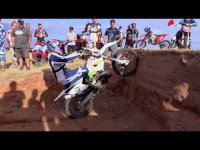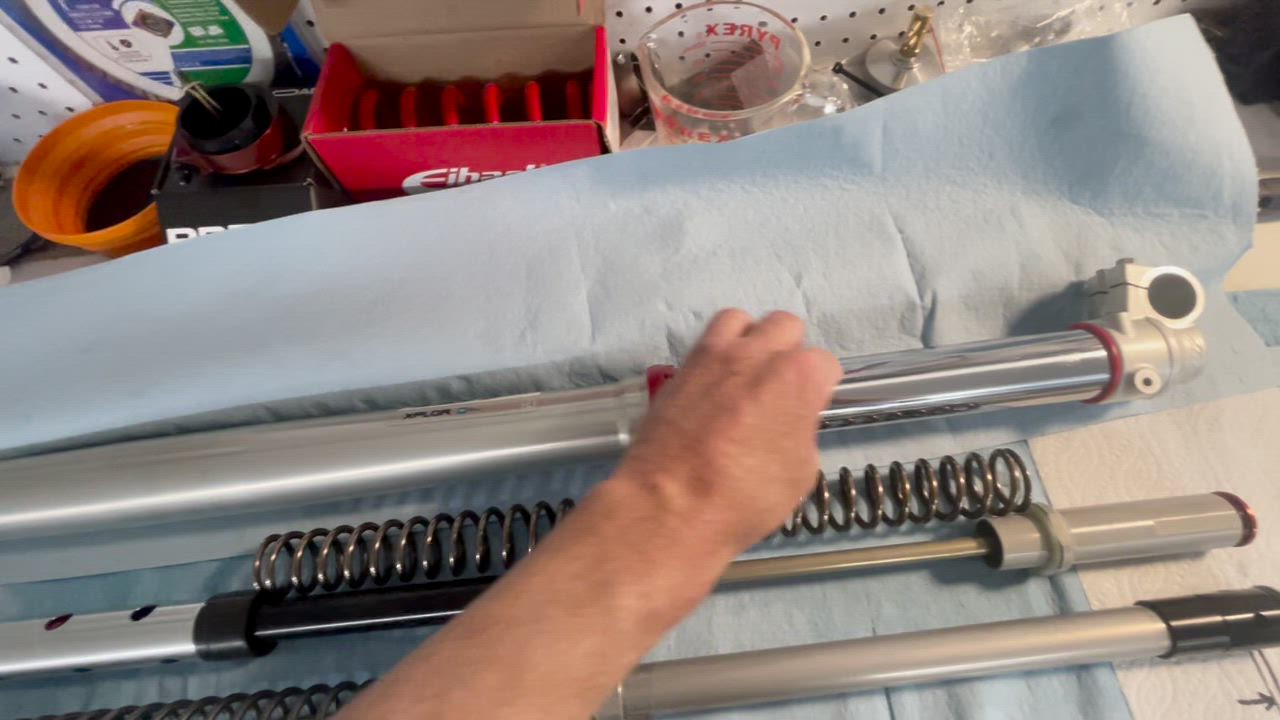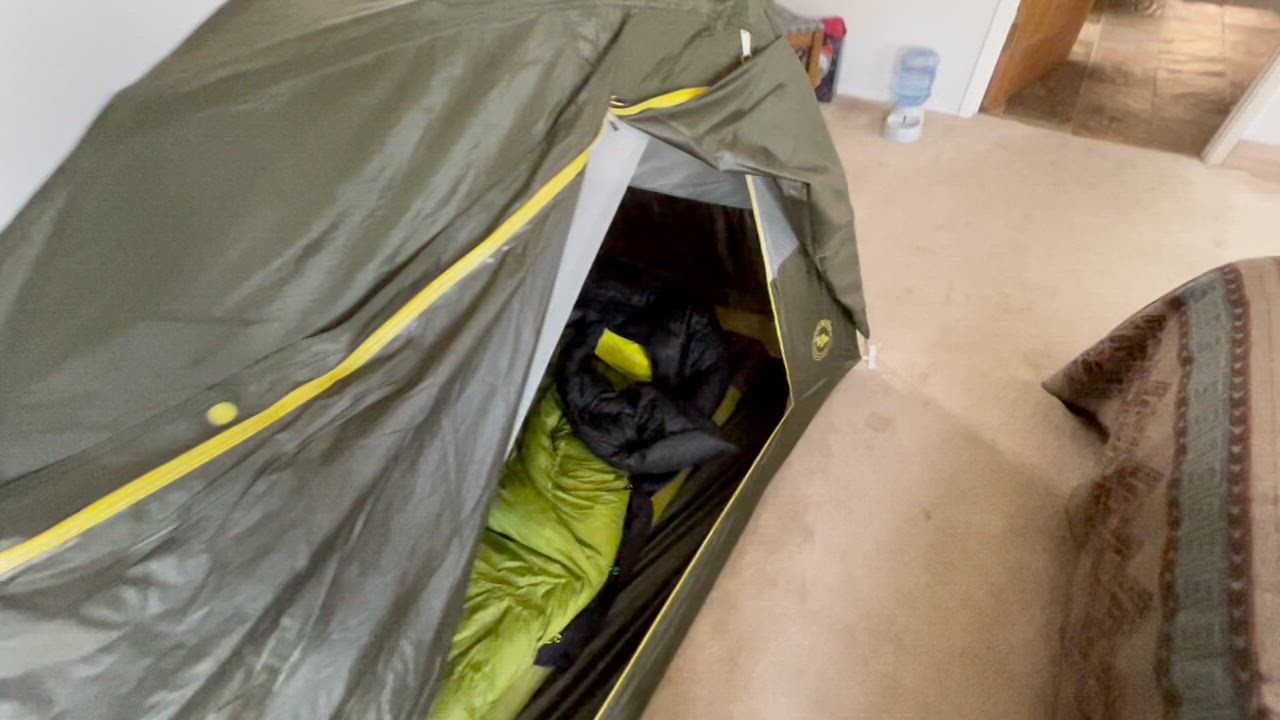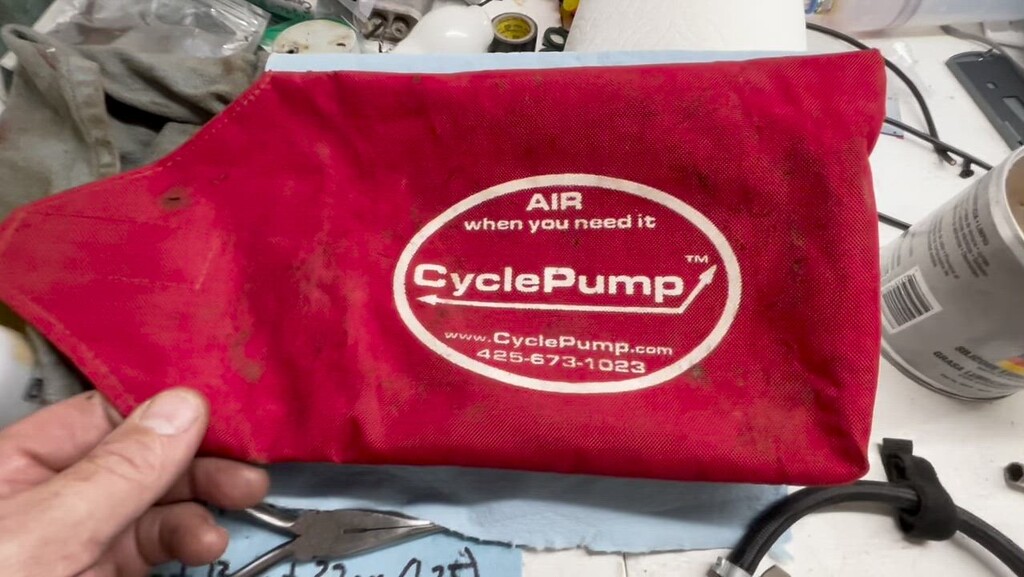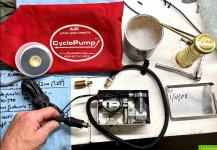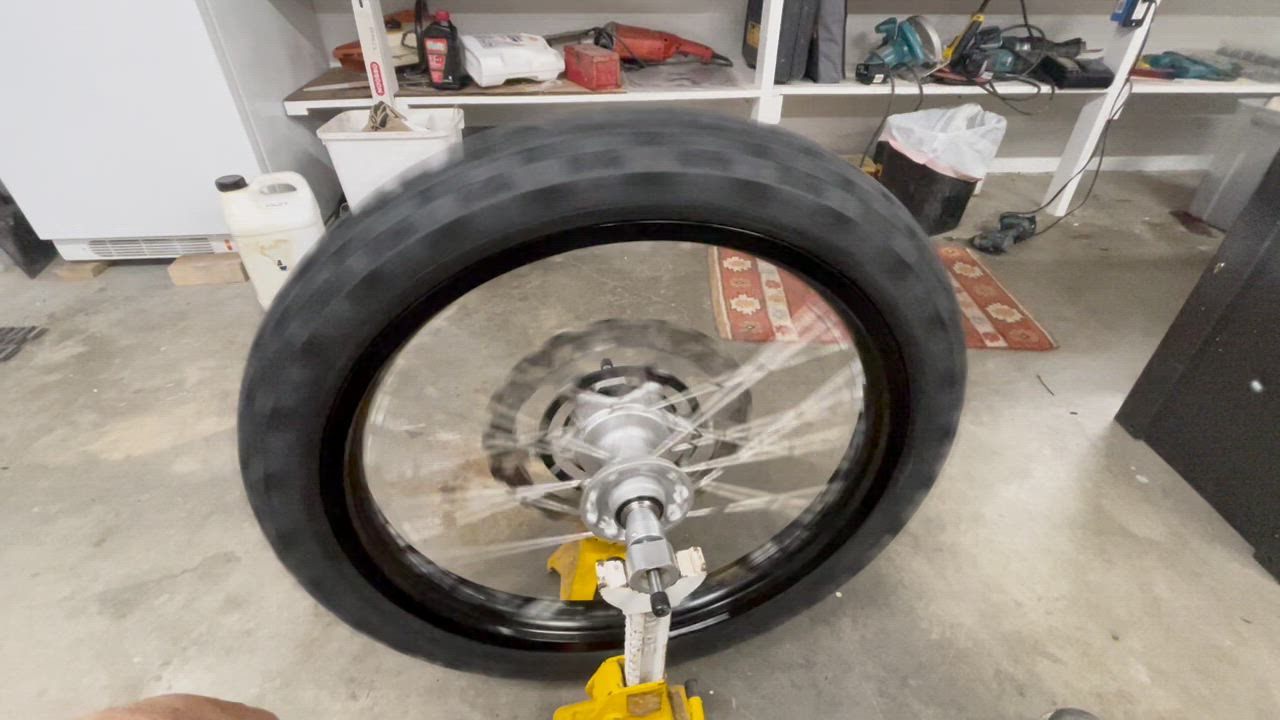Motobene
Well-known member
ACCESSORY POWER
Oops! There's a fly in the perfume of my 3-in-one solution for accessory powe: key-off parasitic draw.
Fortunately I found a factory +\- switched circuit labelled '10A' in the wire nest behind the headlight. Gonna tap into that for the two 12V to 5V buck transformers so they are dead when the key is off.
A vid about this little perturbation:
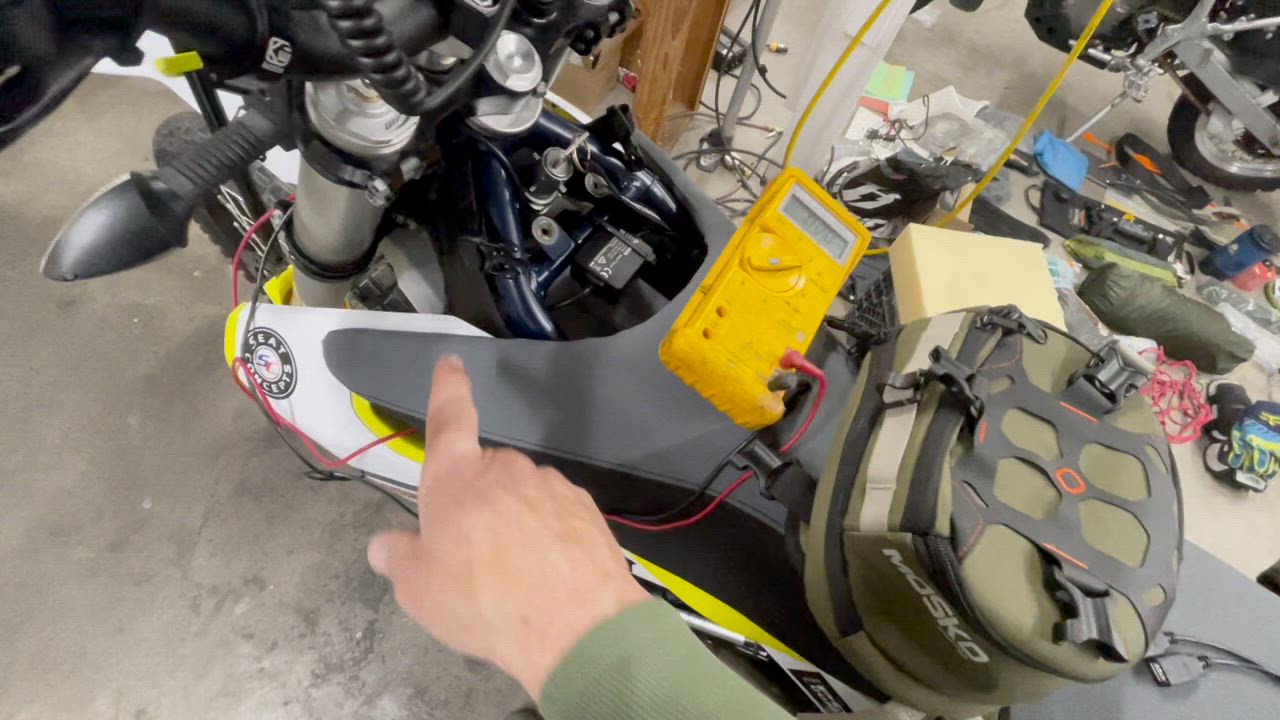
 buffalodream.smugmug.com
buffalodream.smugmug.com
Had to cancel the order for the Powerlet DIN outlet kit, as it's not in stock. I ordered just the outlet PS-001, which should arrive soon.

I use this type of 12V power outlet for my heated vest, air pump, etc.
I put power outlets within reach in front of me while riding. Not hidden away on the bike as is the case with BMWs.
My original idea was to mount the outlet on a plate on the HDB handlebar clamp/plate, but the 690/701 unique design in the otherwise fuel tank area provides unique mounting options, such as in the pop-on & off plastic cover over the ignition switch. There might just be room to sneak it in between the Mosko Gnome tank bag and ignition switch in the blue circle:

The more ideal bag location and a frame tube under the plastic cover may rule out this location, as I'd rather not have to position the bag more rearward:

If it gets too crowded there I have another plastic cover option, in the plastic side cover (red). Either way a clean, simple, and accessible while riding.
As for the two buck transformers, I investigated whether or not they will fit somewhere on the steering side. They will. There's room at the top of the wire nest box behind the headlight. Note how close the available switched accessory power is (blue). Oddly, the + and - terminals for the switched power are both female blade style. Some black sticky on the + terminal boot makes me think the previous bike owner used the terminals for something and was identifying the + terminal with black electrical tape:

I should get this part done today. Note how long the output cord of the Garmin Tread buck transformer is (hanging down and coiled on the floor). This is because the Garmin Tread kit applies to in-vehicle installs as well. I was hoping to shorten the output inside the Garmin black box, but removing the four cover screws revealed a cover stuck fast... as though it was glued on or stuck to the internal potting. The USB A buck transformer cover simply pops off, revealing the simple electronics potted into the box:

So my idea of splitting things up is working out excellently. The Powerlet outlet is in and in a very good spot. There is ample room for the buck transformers up front, and the cords are laying out well.
END RESULT
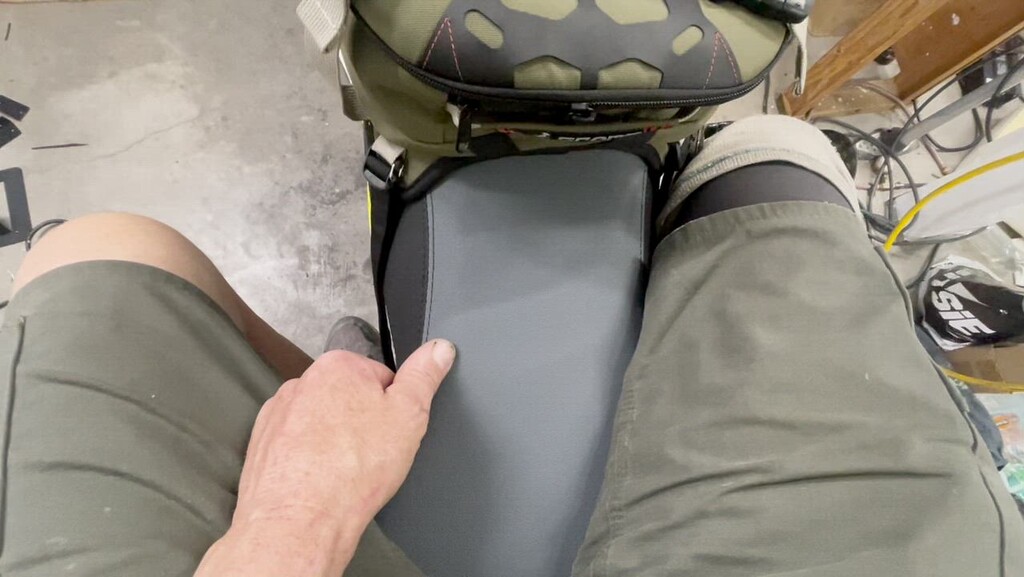
 buffalodream.smugmug.com
buffalodream.smugmug.com
Oops! There's a fly in the perfume of my 3-in-one solution for accessory powe: key-off parasitic draw.
Fortunately I found a factory +\- switched circuit labelled '10A' in the wire nest behind the headlight. Gonna tap into that for the two 12V to 5V buck transformers so they are dead when the key is off.
A vid about this little perturbation:

Husqvarna 701 - buffalodream
This video hosted by SmugMug; your photos and videos look better here.
Had to cancel the order for the Powerlet DIN outlet kit, as it's not in stock. I ordered just the outlet PS-001, which should arrive soon.
I use this type of 12V power outlet for my heated vest, air pump, etc.
I put power outlets within reach in front of me while riding. Not hidden away on the bike as is the case with BMWs.
My original idea was to mount the outlet on a plate on the HDB handlebar clamp/plate, but the 690/701 unique design in the otherwise fuel tank area provides unique mounting options, such as in the pop-on & off plastic cover over the ignition switch. There might just be room to sneak it in between the Mosko Gnome tank bag and ignition switch in the blue circle:
The more ideal bag location and a frame tube under the plastic cover may rule out this location, as I'd rather not have to position the bag more rearward:
If it gets too crowded there I have another plastic cover option, in the plastic side cover (red). Either way a clean, simple, and accessible while riding.
As for the two buck transformers, I investigated whether or not they will fit somewhere on the steering side. They will. There's room at the top of the wire nest box behind the headlight. Note how close the available switched accessory power is (blue). Oddly, the + and - terminals for the switched power are both female blade style. Some black sticky on the + terminal boot makes me think the previous bike owner used the terminals for something and was identifying the + terminal with black electrical tape:
I should get this part done today. Note how long the output cord of the Garmin Tread buck transformer is (hanging down and coiled on the floor). This is because the Garmin Tread kit applies to in-vehicle installs as well. I was hoping to shorten the output inside the Garmin black box, but removing the four cover screws revealed a cover stuck fast... as though it was glued on or stuck to the internal potting. The USB A buck transformer cover simply pops off, revealing the simple electronics potted into the box:
So my idea of splitting things up is working out excellently. The Powerlet outlet is in and in a very good spot. There is ample room for the buck transformers up front, and the cords are laying out well.
END RESULT

Husqvarna 701 - buffalodream
This video hosted by SmugMug; your photos and videos look better here.
Last edited:

